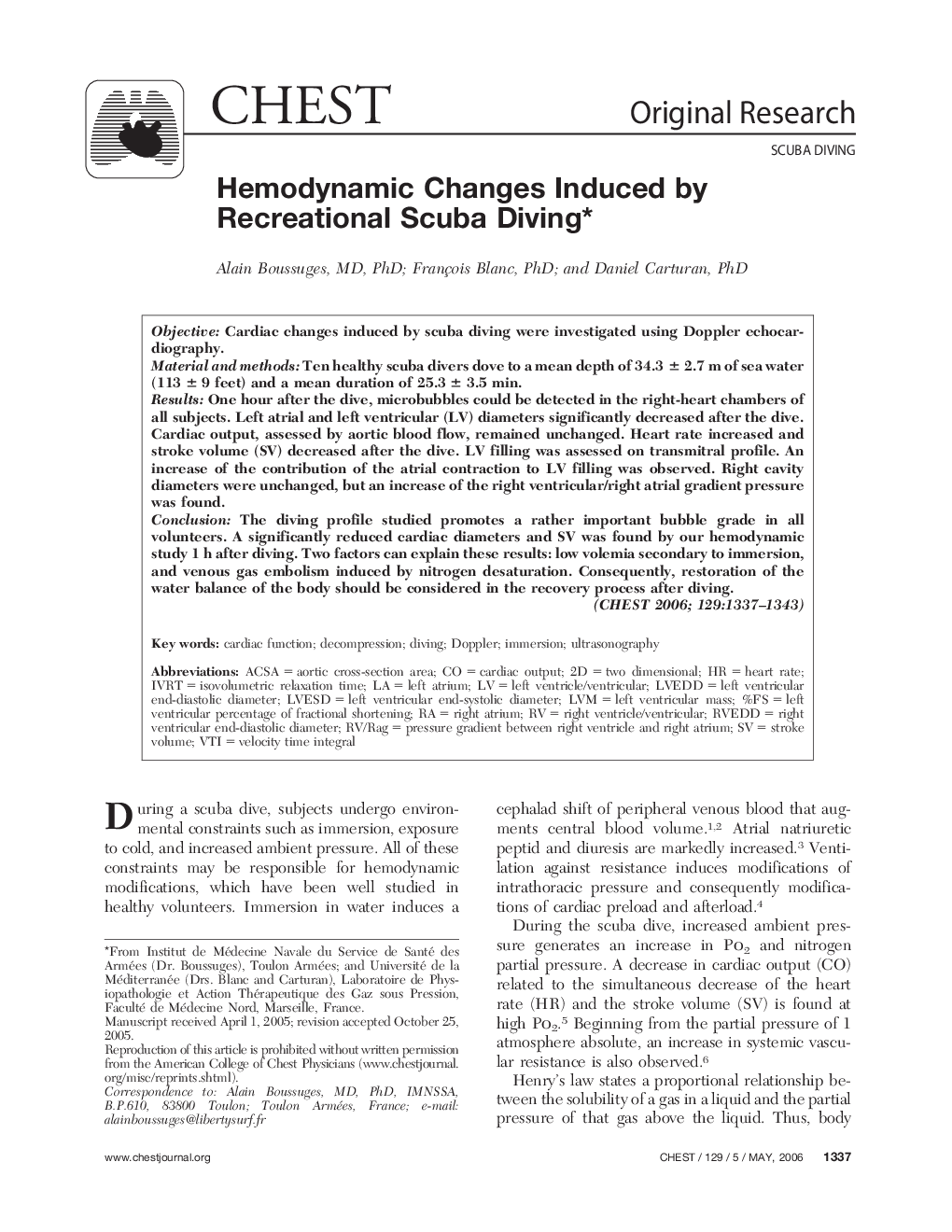| Article ID | Journal | Published Year | Pages | File Type |
|---|---|---|---|---|
| 2905900 | Chest | 2006 | 7 Pages |
ObjectiveCardiac changes induced by scuba diving were investigated using Doppler echocardiography.Material and methodsTen healthy scuba divers dove to a mean depth of 34.3 ± 2.7 m of sea water (113 ± 9 feet) and a mean duration of 25.3 ± 3.5 min.ResultsOne hour after the dive, microbubbles could be detected in the right-heart chambers of all subjects. Left atrial and left ventricular (LV) diameters significantly decreased after the dive. Cardiac output, assessed by aortic blood flow, remained unchanged. Heart rate increased and stroke volume (SV) decreased after the dive. LV filling was assessed on transmitral profile. An increase of the contribution of the atrial contraction to LV filling was observed. Right cavity diameters were unchanged, but an increase of the right ventricular/right atrial gradient pressure was found.ConclusionThe diving profile studied promotes a rather important bubble grade in all volunteers. A significantly reduced cardiac diameters and SV was found by our hemodynamic study 1 h after diving. Two factors can explain these results: low volemia secondary to immersion, and venous gas embolism induced by nitrogen desaturation. Consequently, restoration of the water balance of the body should be considered in the recovery process after diving.
